On Her Majesty’s Public Service: Celebrating 70 years of Queen Elizabeth II
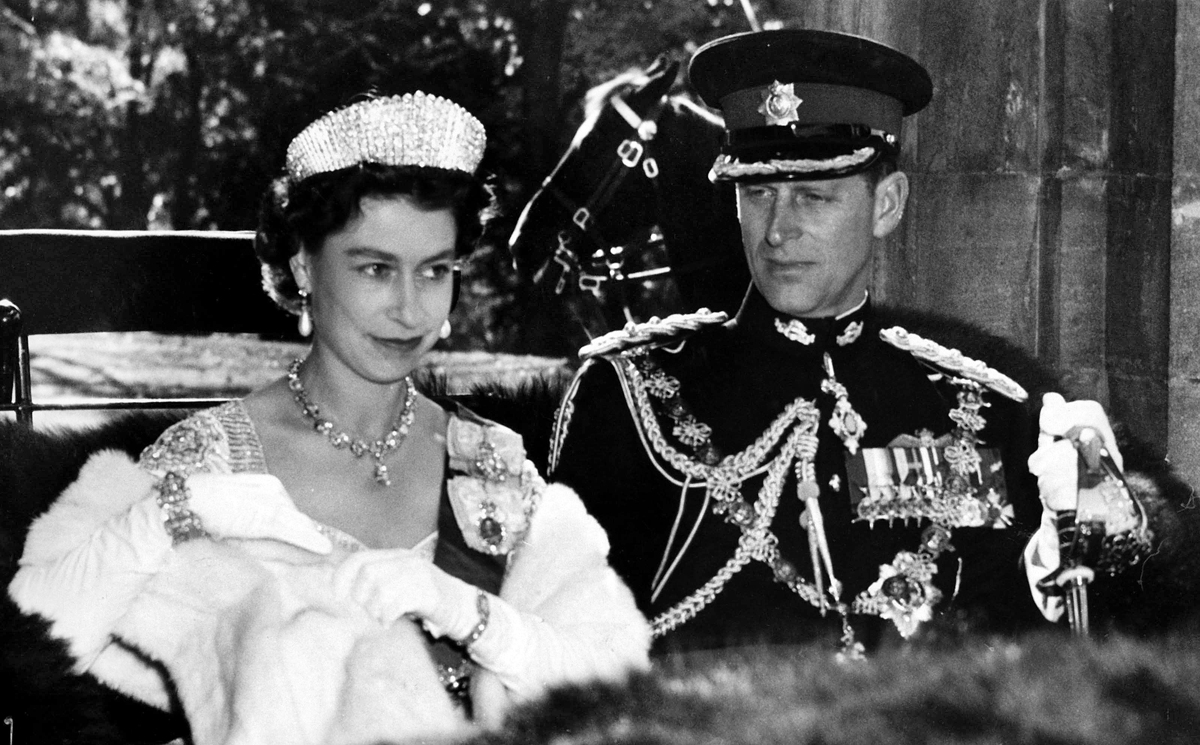
Canada’s Elizabethan Age reached its 70th year in February 2022 as the entire Commonwealth began to celebrate the Platinum Jubilee of Her Majesty Queen Elizabeth II.
It is the first platinum jubilee to be commemorated in Canada and in the United Kingdom; the Queen surpassed Queen Victoria to become the Britain’s longest-reigning monarch in September 2015.
Though her coronation took place in 1953, Queen Elizabeth acceded to the throne on February 6, 1952, immediately upon the death of her father, King George VI. Her connection and devotion to Canada — and to the Senate — began even earlier.
As a 21-year-old princess, she pledged that her whole life would be devoted to serving the entire British Commonwealth and in 1951 she and her husband, the Duke of Edinburgh, spent 33 days in Canada.
“Nowhere under the sun could one find a land more full of hope, of happiness and of fine, loyal, generous-hearted people,” she said.
“They have placed in our hearts a love for their country and its people which will never grow cold and which will always draw us to their shores.”
She returned to Canada in 1957 to open the 23rd Parliament and read the Speech from the Throne in the Senate Chamber.
“Honourable members of the Senate, members of the House of Commons — I greet you as your Queen,” she said. “Together, we constitute the Parliament of Canada. For the first time, the people of Canada and their Sovereign are here assembled on the occasion of the opening of Parliament. This is for all of us a moment to remember.”
The throne speech always takes place in the Senate because the monarch is not allowed in the House of Commons. This convention dates back to 1642, when King Charles I burst into the British House of Commons in a failed attempt to arrest five members of Parliament. No monarch has entered the House of Commons since and Canada has inherited the tradition that the rightful place of the Monarch is in the Senate.
The Queen returned to the Senate in 1977 for what was then her Silver Jubilee tour.
“A generation of Canadians has been born and grown to maturity during my reign,” she said during the throne speech to open the third session of the 30th Parliament. “They are people made strong by the achievements of their parents and grandparents, but not imprisoned by the prejudices of the past.
“In their sensitivity towards other people, in their sense of justice, their generosity and good will, lie not only lessons for us all, but also the best and surest hope for unity and understanding among Canadians everywhere.”
The Queen remains central to Canada’s parliamentary democracy.
The government rules in her name; the opposition party with the most seats is known as Her Majesty’s Loyal Opposition.
All bills must receive Royal Assent before they can become law, either from the Queen directly or more often from her representative in Canada, the governor general.
Only the Queen or her representative can end or begin a parliamentary session.
And the Senate and the House of Commons can only meet if the Mace — the symbol of the Queen’s authority — is on the Clerk’s Table (the House has its own mace).
Speaker of the Senate George J. Furey offered his congratulations to the Queen.
“She has served with unwavering devotion and loyalty,” he said. “It is with the greatest of pleasure that I congratulate Her Majesty on this historic milestone. This joyful occasion grants us the opportunity to reflect on the close relationship that exists between Her Majesty and Canada.”
Celebrations of the Queen’s Platinum Jubilee will take place throughout the year as Canadians mark her 70 years of service and dedication to Canada.
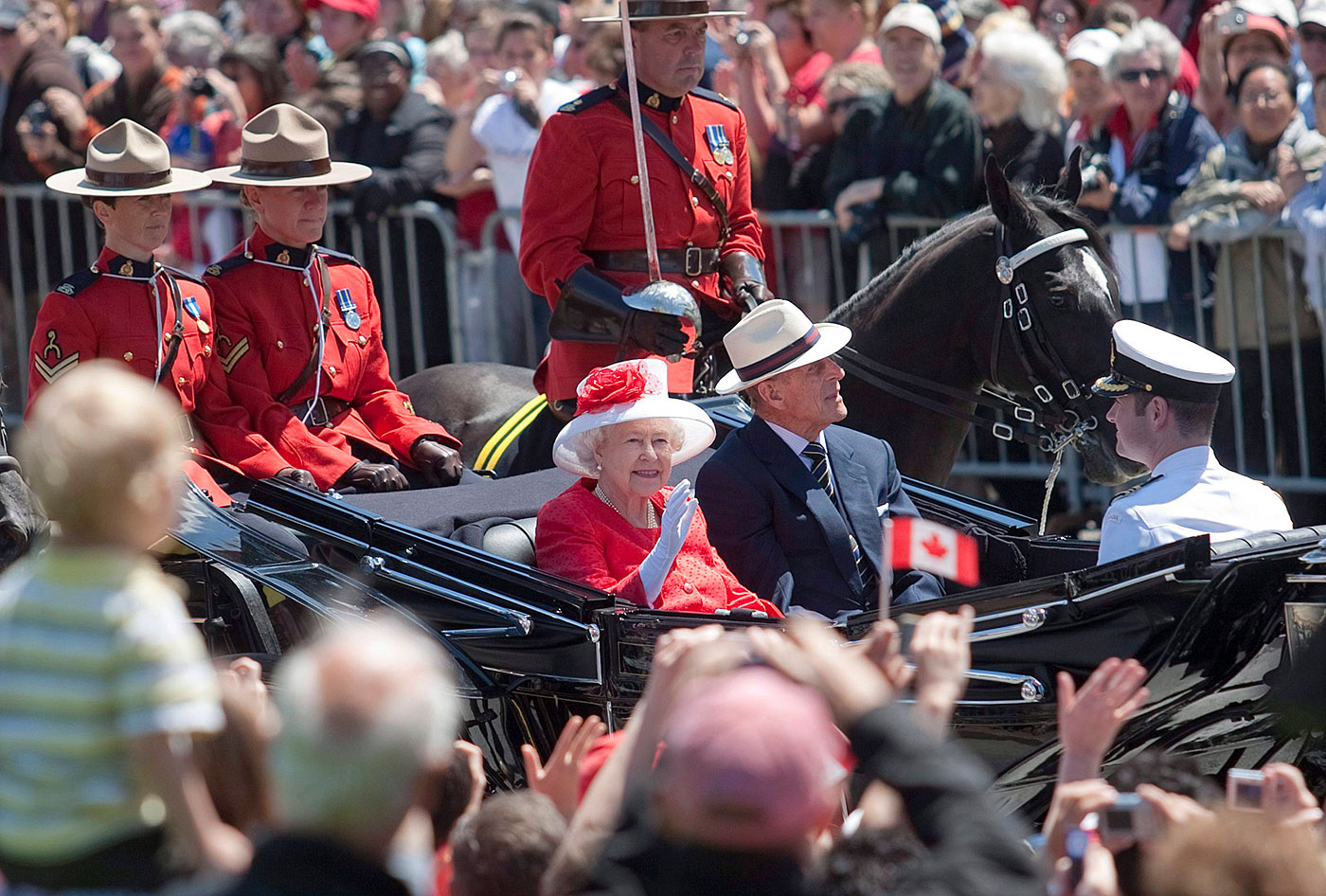
Queen Elizabeth II greets crowds in Ottawa during Canada Day festivities in 2010. Her late husband, Prince Philip, Duke of Edinburgh, sits at her side. Her full Canadian title, per the Royal Styles and Titles Act, is Elizabeth the Second, by the Grace of God of the United Kingdom, Canada and her other Realms and Territories Queen, Head of the Commonwealth, Defender of the Faith. (Photo credit: The Canadian Press)
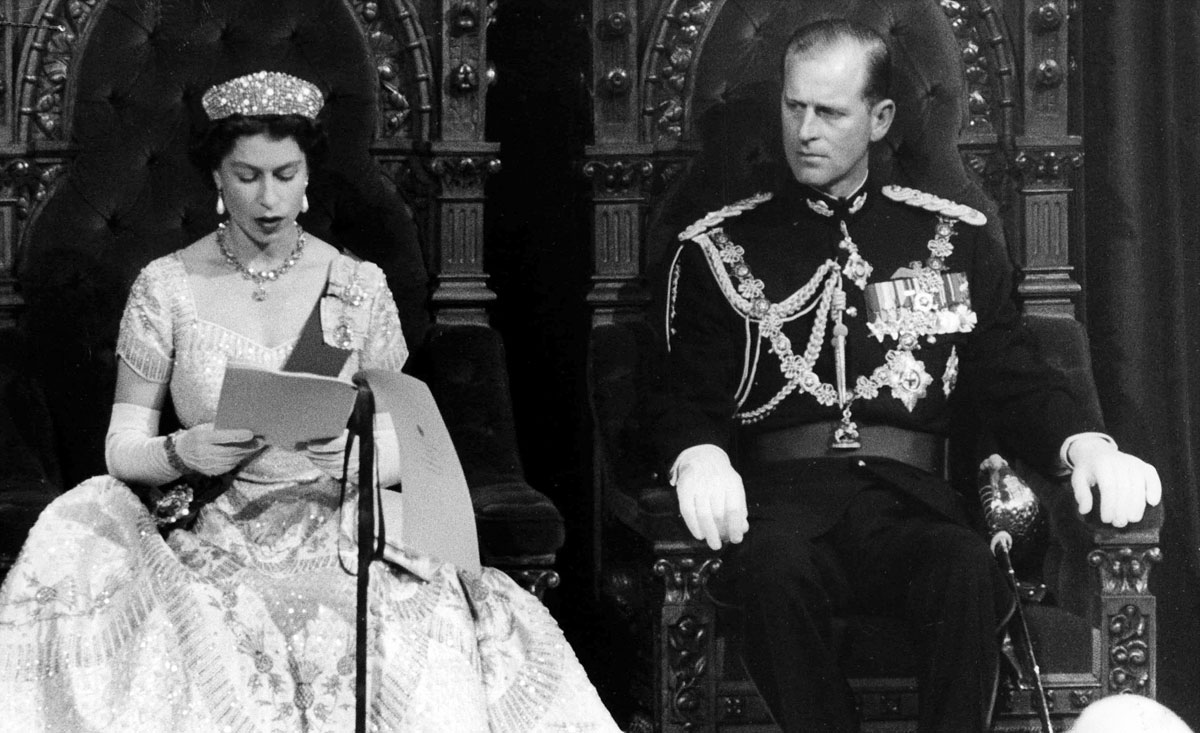
The Queen reads the Speech from the Throne in the Senate Chamber in 1957. It was the first time any Queen or King of Canada had opened a session of Canada’s Parliament. Prince Philip sits beside her. (Photo credit: The Canadian Press)
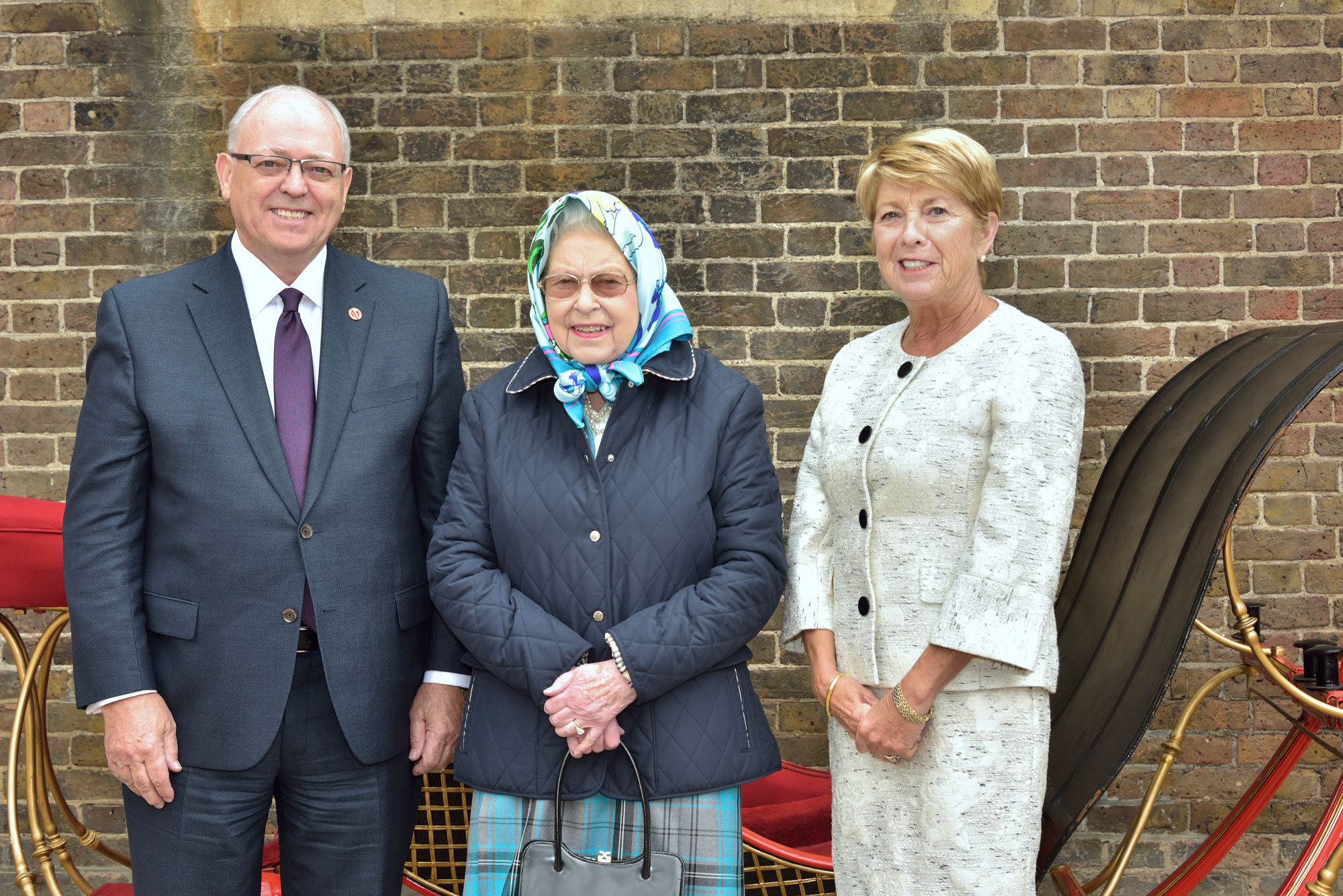
The Queen, centre, stands with Speaker of the Senate George J. Furey and his wife Karen Furey in the Royal Mews, Windsor Castle, in 2018. (Photo credit: Office of the Speaker of the Senate)

The Queen reads the Speech from the Throne in 1977 as part of her Silver Jubilee tour of Canada. (Photo credit: The Canadian Press)
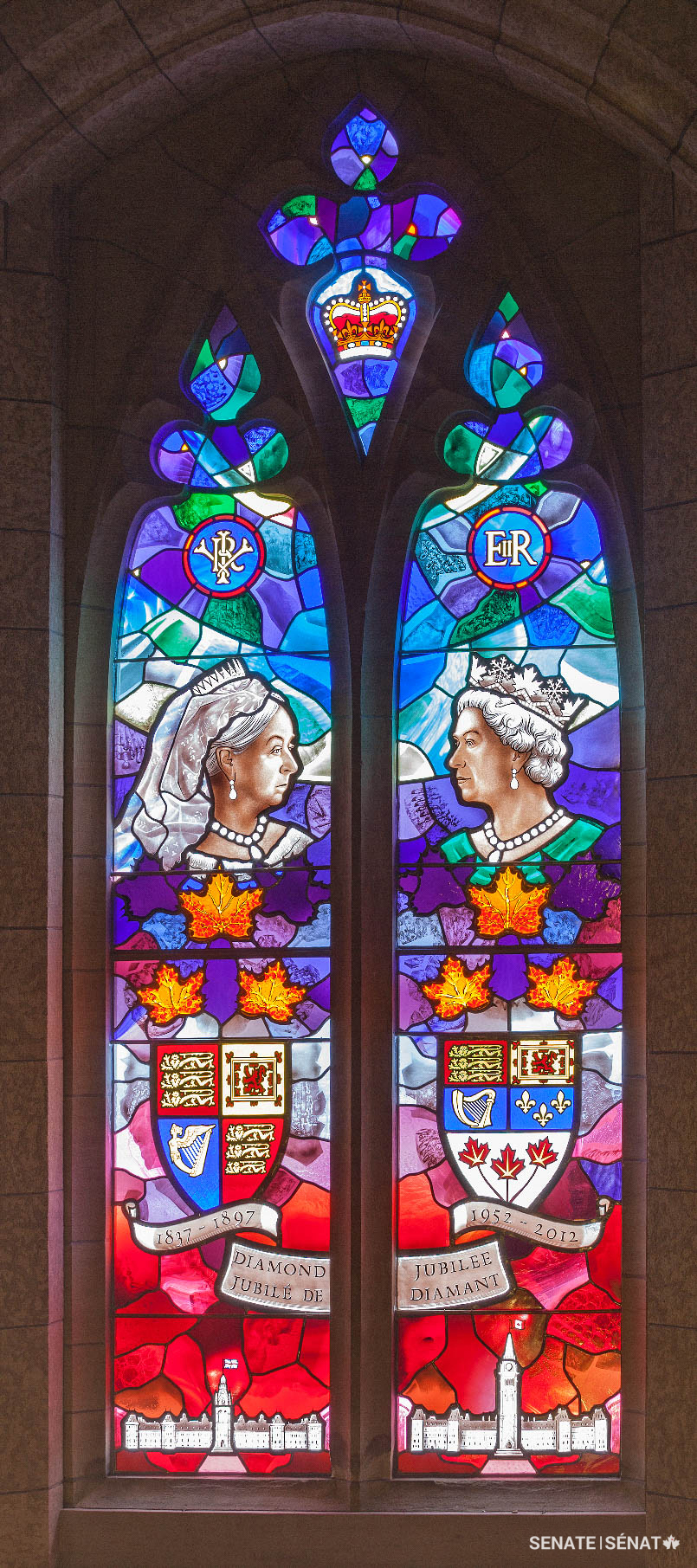
A stained-glass window commemorating the Queen’s Diamond Jubilee — 60 years on the throne — was installed above the Senate entrance to Centre Block. It also features Queen Victoria, who celebrated her own Diamond Jubilee in 1897 and who reigned when Canada was formed in 1867. The window was temporarily removed in 2020 as part of the rehabilitation of Centre Block. (Diamond Jubilee Window, stained glass, 2010, Goodman Zissoff Stained Glass Studio, H: 383 cm W: 134.5 cm, Senate Artwork and Heritage Collection.)

This portrait of the Queen hangs near the entrance of the Senate of Canada Building. Artist Lilias Torrance Newton painted it in 1957 and recorded in her diary that the Queen was “very pretty, shy, stiff in pose.” History, however, records the Queen’s courage, dedication to duty and stiff resolve. (H.M. Queen Elizabeth II, 1952-Present, oil on canvas, H: 224.5 cm W: 153.5 cm, part of the Official Residences Crown Collection, National Capital Commission, © National Gallery of Canada, Ottawa. Photo credit: National Capital Commission)
Related articles
Tags
Committee news
On Her Majesty’s Public Service: Celebrating 70 years of Queen Elizabeth II

Canada’s Elizabethan Age reached its 70th year in February 2022 as the entire Commonwealth began to celebrate the Platinum Jubilee of Her Majesty Queen Elizabeth II.
It is the first platinum jubilee to be commemorated in Canada and in the United Kingdom; the Queen surpassed Queen Victoria to become the Britain’s longest-reigning monarch in September 2015.
Though her coronation took place in 1953, Queen Elizabeth acceded to the throne on February 6, 1952, immediately upon the death of her father, King George VI. Her connection and devotion to Canada — and to the Senate — began even earlier.
As a 21-year-old princess, she pledged that her whole life would be devoted to serving the entire British Commonwealth and in 1951 she and her husband, the Duke of Edinburgh, spent 33 days in Canada.
“Nowhere under the sun could one find a land more full of hope, of happiness and of fine, loyal, generous-hearted people,” she said.
“They have placed in our hearts a love for their country and its people which will never grow cold and which will always draw us to their shores.”
She returned to Canada in 1957 to open the 23rd Parliament and read the Speech from the Throne in the Senate Chamber.
“Honourable members of the Senate, members of the House of Commons — I greet you as your Queen,” she said. “Together, we constitute the Parliament of Canada. For the first time, the people of Canada and their Sovereign are here assembled on the occasion of the opening of Parliament. This is for all of us a moment to remember.”
The throne speech always takes place in the Senate because the monarch is not allowed in the House of Commons. This convention dates back to 1642, when King Charles I burst into the British House of Commons in a failed attempt to arrest five members of Parliament. No monarch has entered the House of Commons since and Canada has inherited the tradition that the rightful place of the Monarch is in the Senate.
The Queen returned to the Senate in 1977 for what was then her Silver Jubilee tour.
“A generation of Canadians has been born and grown to maturity during my reign,” she said during the throne speech to open the third session of the 30th Parliament. “They are people made strong by the achievements of their parents and grandparents, but not imprisoned by the prejudices of the past.
“In their sensitivity towards other people, in their sense of justice, their generosity and good will, lie not only lessons for us all, but also the best and surest hope for unity and understanding among Canadians everywhere.”
The Queen remains central to Canada’s parliamentary democracy.
The government rules in her name; the opposition party with the most seats is known as Her Majesty’s Loyal Opposition.
All bills must receive Royal Assent before they can become law, either from the Queen directly or more often from her representative in Canada, the governor general.
Only the Queen or her representative can end or begin a parliamentary session.
And the Senate and the House of Commons can only meet if the Mace — the symbol of the Queen’s authority — is on the Clerk’s Table (the House has its own mace).
Speaker of the Senate George J. Furey offered his congratulations to the Queen.
“She has served with unwavering devotion and loyalty,” he said. “It is with the greatest of pleasure that I congratulate Her Majesty on this historic milestone. This joyful occasion grants us the opportunity to reflect on the close relationship that exists between Her Majesty and Canada.”
Celebrations of the Queen’s Platinum Jubilee will take place throughout the year as Canadians mark her 70 years of service and dedication to Canada.

Queen Elizabeth II greets crowds in Ottawa during Canada Day festivities in 2010. Her late husband, Prince Philip, Duke of Edinburgh, sits at her side. Her full Canadian title, per the Royal Styles and Titles Act, is Elizabeth the Second, by the Grace of God of the United Kingdom, Canada and her other Realms and Territories Queen, Head of the Commonwealth, Defender of the Faith. (Photo credit: The Canadian Press)

The Queen reads the Speech from the Throne in the Senate Chamber in 1957. It was the first time any Queen or King of Canada had opened a session of Canada’s Parliament. Prince Philip sits beside her. (Photo credit: The Canadian Press)

The Queen, centre, stands with Speaker of the Senate George J. Furey and his wife Karen Furey in the Royal Mews, Windsor Castle, in 2018. (Photo credit: Office of the Speaker of the Senate)

The Queen reads the Speech from the Throne in 1977 as part of her Silver Jubilee tour of Canada. (Photo credit: The Canadian Press)

A stained-glass window commemorating the Queen’s Diamond Jubilee — 60 years on the throne — was installed above the Senate entrance to Centre Block. It also features Queen Victoria, who celebrated her own Diamond Jubilee in 1897 and who reigned when Canada was formed in 1867. The window was temporarily removed in 2020 as part of the rehabilitation of Centre Block. (Diamond Jubilee Window, stained glass, 2010, Goodman Zissoff Stained Glass Studio, H: 383 cm W: 134.5 cm, Senate Artwork and Heritage Collection.)

This portrait of the Queen hangs near the entrance of the Senate of Canada Building. Artist Lilias Torrance Newton painted it in 1957 and recorded in her diary that the Queen was “very pretty, shy, stiff in pose.” History, however, records the Queen’s courage, dedication to duty and stiff resolve. (H.M. Queen Elizabeth II, 1952-Present, oil on canvas, H: 224.5 cm W: 153.5 cm, part of the Official Residences Crown Collection, National Capital Commission, © National Gallery of Canada, Ottawa. Photo credit: National Capital Commission)


